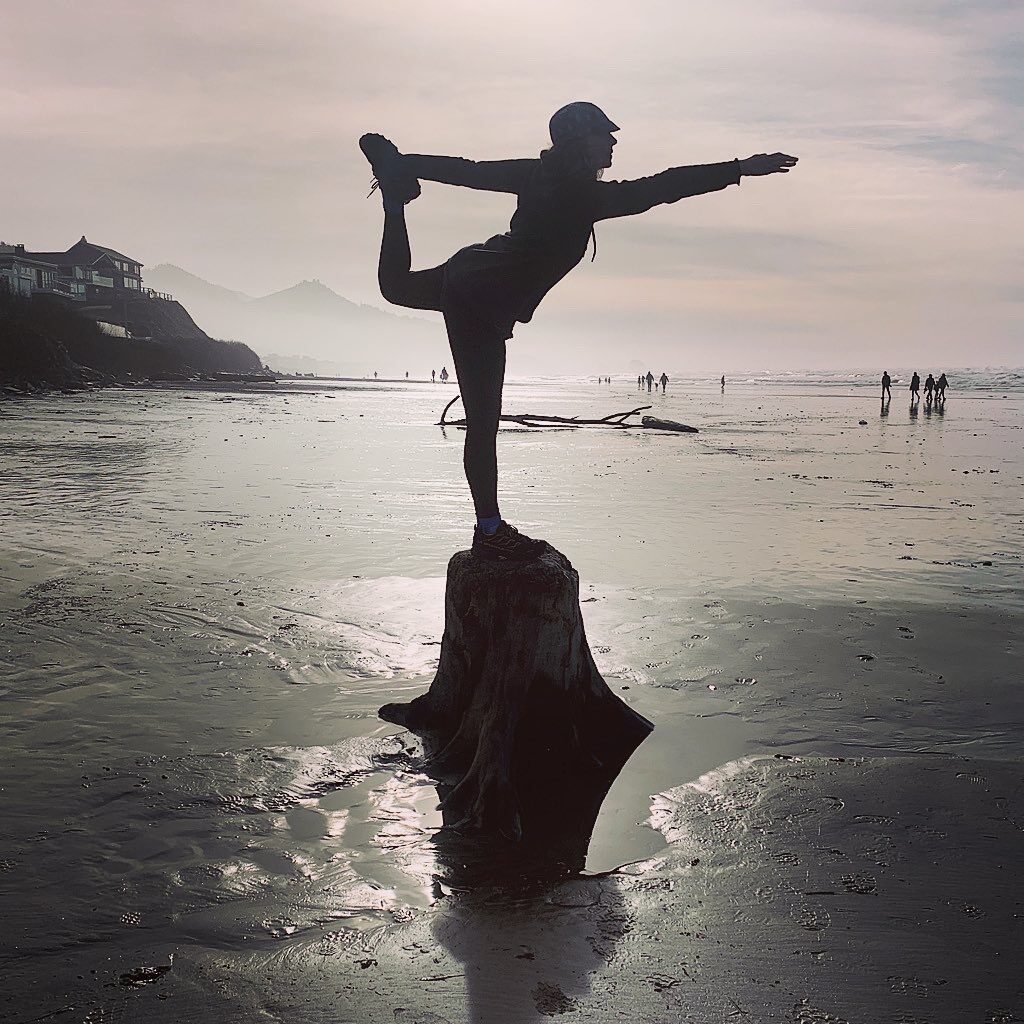
Resilience is accepting your new reality, even if it’s less good than the one you had before. You can fight it, you can do nothing but scream about what you’ve lost, or you can accept that and try to put together something that’s good.
Elizabeth Edwards
This article will appear in The Trek later this month. I thought I’d give you a little preview...
I was not a happy camper one late summer afternoon at the doctor’s office. The air conditioning was too cold, I had my legs splayed in an awkward position because I could hardly tolerate sitting and there was nothing to look at but four walls painted institutional-beige where clear plastic holders hung in a row offering up pamphlets on joint replacement.
I did not take one.
“They’re clearly not talking to me,” I thought. “At least not now.” I was here because of pain in my right inner thigh. It had gotten so bad it was throwing off my gait. Vitamin I, as thru-hikers call it, was keeping me upright these days and no amount of stretching or massage helped. Instead, it was getting worse.
The door banged open and Dr. Stroemer, a tall, well-fed Midwesterner with a buzz-cut, strode in. I’d chosen him by accident, picking the first available appointment at Summit Orthopedics in the Twin Cites to just get this thing over with and find some relief. On his computer screen was an X-ray from three years previous of my left hip. “You do know that I’m here about my right hip?” I said, the snark in my voice not at all attractive.
He quickly sat down and, like me, ignored all formalities. “You don’t want to look at that,” he said. “Actually, you don’t want to look at this either.” He then proceeded to pull up the X-ray they had just taken showing my hipbones compressed tightly against my pelvic bone, like a square peg shoved into a round hole. “There’s no cartilage. At all. In EITHER hip.”
“Wait, what?” I stammered. “But this is a pain in my groin. I pulled something or ripped something or…I just walked 5,000 miles!”
“Yeah, well, you wore ‘em out and now, you need new ones.”
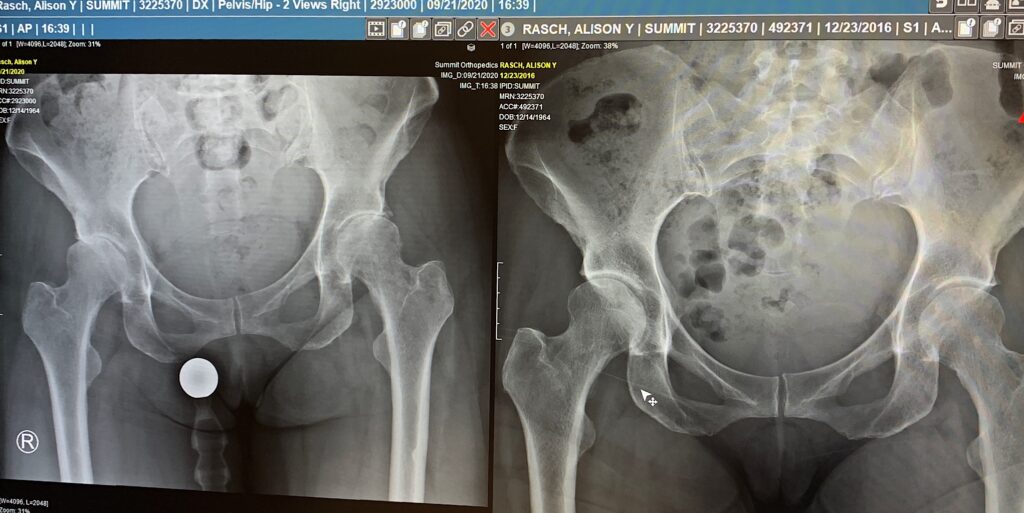
Allow me to introduce myself. My name is Alison Young, a.k.a Blissful Hiker. As a “full-time pedestrian,” I’ve walked 12,000+ miles on six continents. I walk to focus my energy and stay quite literally grounded. In fact, my earliest memory is of looking down at my shoes at around age three and watching them take me somewhere, knowing moving means power.
And I guess the opposite is true too, not moving means, if not powerlessness, at least depression.
The saga of replacing my hips began three years earlier when I used a heel hook to hoist myself up the crux on an overhanging wall. I felt something snap and screamed for a take, barely able to walk once my feet found the ground. I assumed I’d torn something, but being late-December and only a few months left on my health insurance deductible, my husband Richard drove me an hour across town to get an MRI.
It turns out an X-ray would have told me all I needed to know, and been far less stressful. I did not have a soft-tissue injury, but rather Advanced Osteoarthritis (OA) of the Hip. As a bit of a catastrophizer, hearing that caused a flood of tears. “I’m too young” I wailed. “Walking is what I do! This can not be happening!”
The doctor who broke the news to me had seen it all and after an eye-roll she suggested the most logical option – a cortisone shot.
Cortisone is actually a synthetic version of the cortisol steroid we create in our bodies in response to stress. The idea is to inject a higher dose directly into the joint. It doesn’t really hurt since they use a local anesthetic and it can offer results within a few days that can last for months. Most important, a cortisone shot can delay joint replacement. The downside is that repeated shots tend to be less effective and must be spread out with at least three months in between.
Other risks include infection, nerve damage, a flaring up of pain and, most concerning, destroying the bone altogether, in which case I’d need to replace it. But since replacing it was going to happen sooner or later, I figured it was worth a shot. (pun intended)
It’s not as though everything was fine after the shot. It was recommended that I meet with a physical therapist. Now I’m not opposed to physical therapy, but I was starting a whole new year of high deductible health insurance and the idea sounded expensive. Furthermore, I just happened to live down the street from a yoga studio.
This was no ordinary yoga studio. Here, they led 90-minute Bikram-style yoga in a room heated to 106 degrees. With my doctor’s blessing, I began daily practice and was amazed at the improvement in the affected joint, and all my joints for that matter.
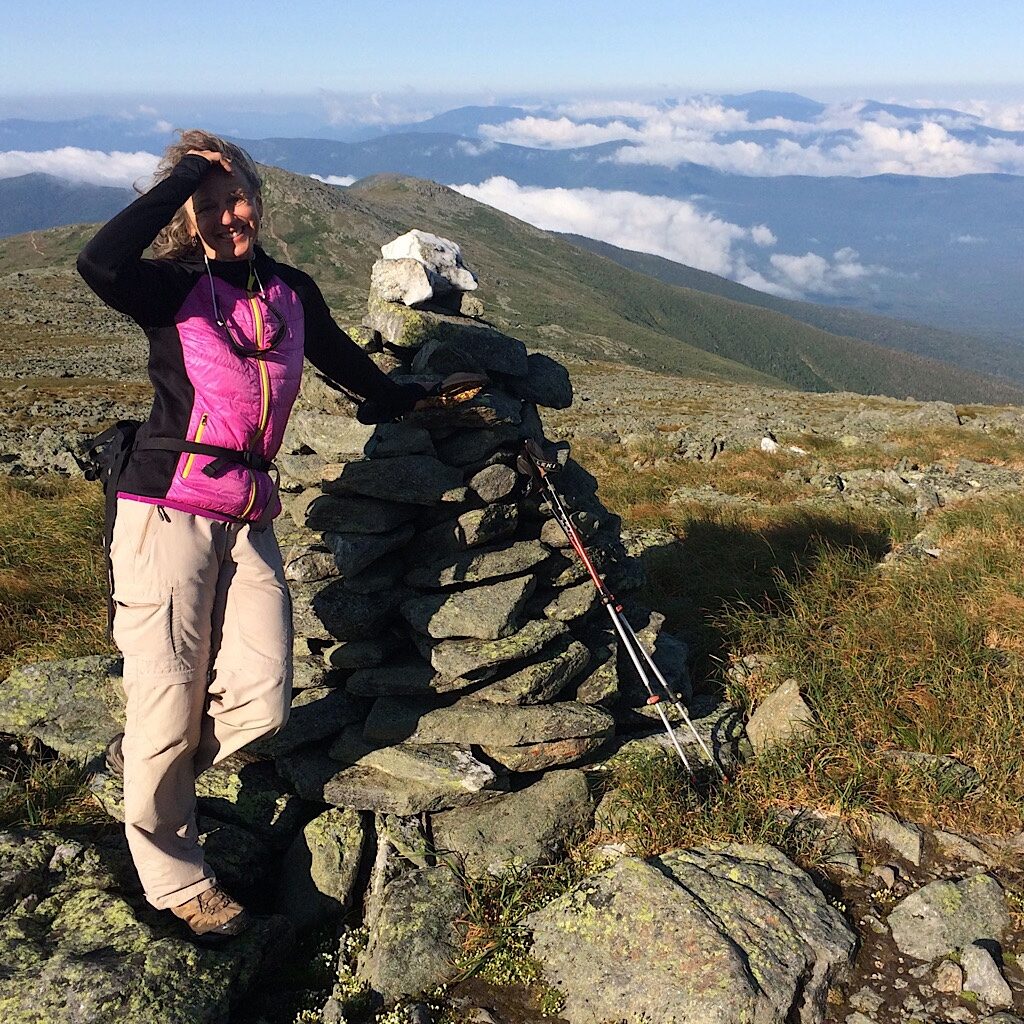
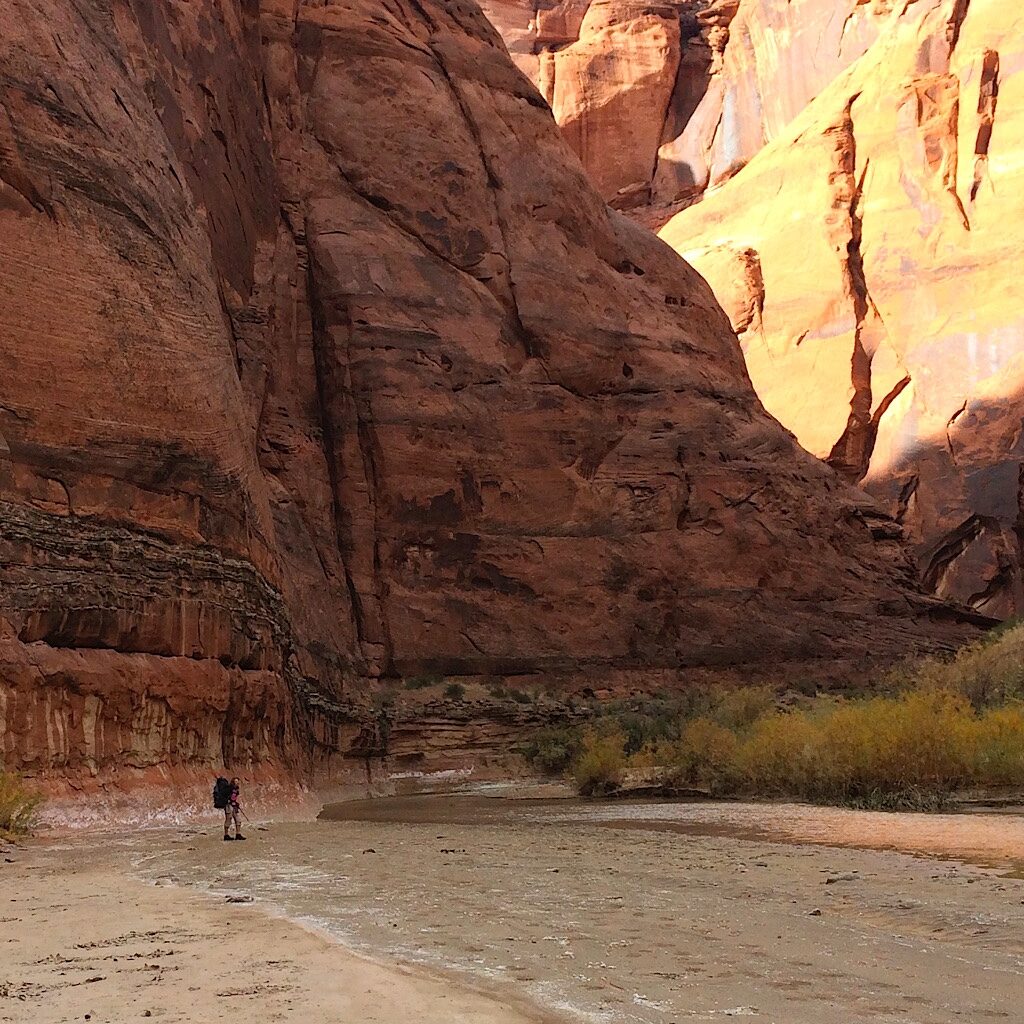
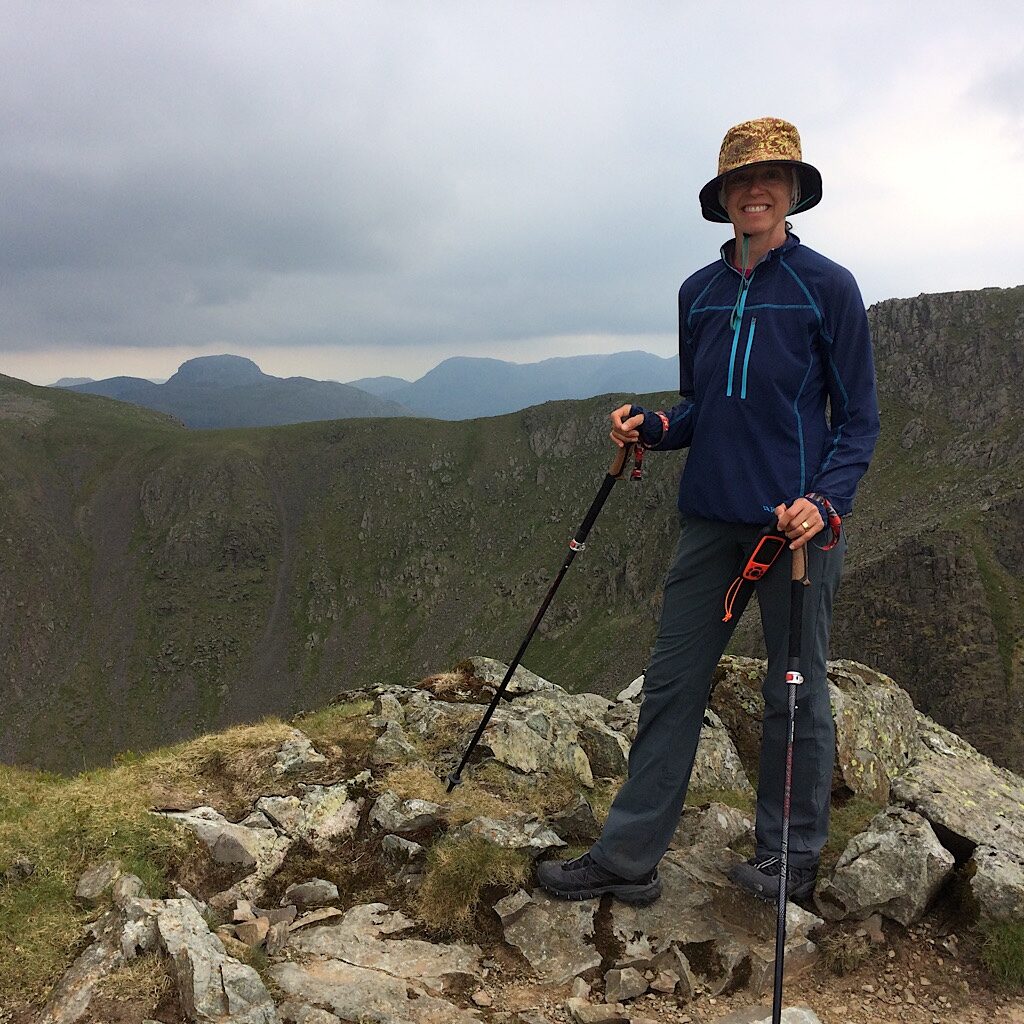
One shot in my left hip, hard-core hot yoga, and walking every day in Minnesota winter and I was back on trail by late spring – Peru’s Vilcabamba Range, New Hampshire’s White Mountains, the Paria Canyon, Minnesota’s Border Route, and England’s Coast-to-Coast and Lake District.
While walking those shorter trails, I never once gave my hip a thought, but I had a funny feeling time was running out. So I took a leave-of-absence and headed out for an adventure of a lifetime on New Zealand’s 2,000-mile Te Araroa, my first long distance thru-hike. When my career break turned into something more permanent, my husband pushed me out the door again to tackle the 2600+ miles of the Pacific Crest Trail, my second long distance thru-hike I completed end-to-end, strong and agile.
Over time, genetics caught up with me. I should pause here to mention that it wasn’t walking that wore out my hips. I’m predisposed for osteoarthritis. Both my parents and my older brother have new hips and another brother is on his way. I also have hip dysplasia, where the hip socket doesn’t fully cover the ball portion of the upper thighbone. Wearing them down was inevitable.
It’s funny, though, that I was not prepared for the eventuality of a replacement, even after the episode three years earlier. It seems denial also runs in my family, as does stubbornness. With pain so bad I could hardly walk, I set out for nine days on Isle Royale, lurching along with the help of painkillers. It was only after I returned that I sought out Dr. Stroemer who gave me the bad news. But I still needed one last thru-hike before surgery. That one was on the Kekekabic in Northern Minnesota. It’s only 41 miles, but remote and oftentimes hard to follow.
I took handfuls of Ibuprofen and planned to walk short distances each day, but that didn’t prevent me from falling – spectacularly and right on my face. This was getting real. I no longer could trust my gait and I knew the time had come. At that moment and in a sort of synchronistic magic reserved only for fairly tales, I met a friend on trail who recently had both his hips replaced one after another – and he was hiking within three months!
That was the clincher. I too wanted my hips replaced one after the other. My thinking was that if I had to take any time away from the trail, I wanted it all in one lump. Furthermore, the degeneration was so far along, both hips had to be replaced sooner rather than later, so waiting really was not an option.
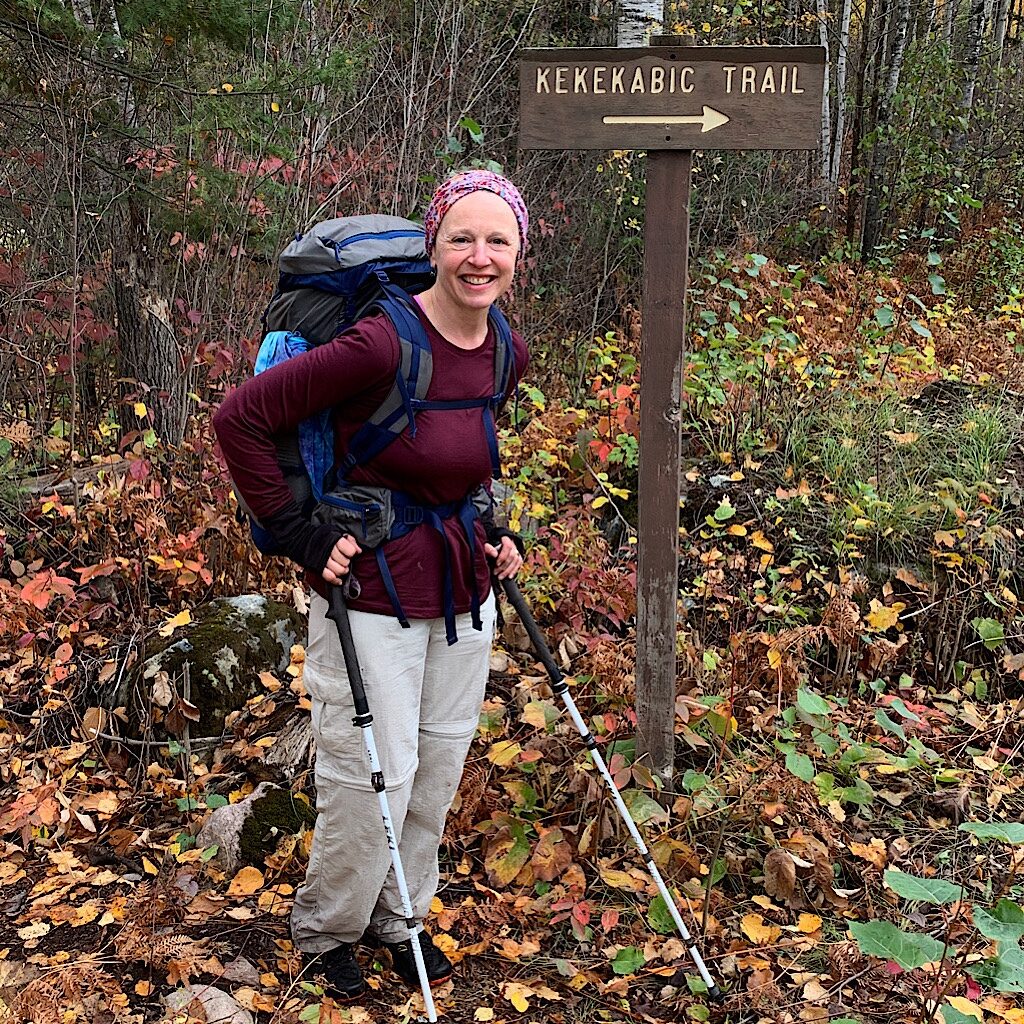
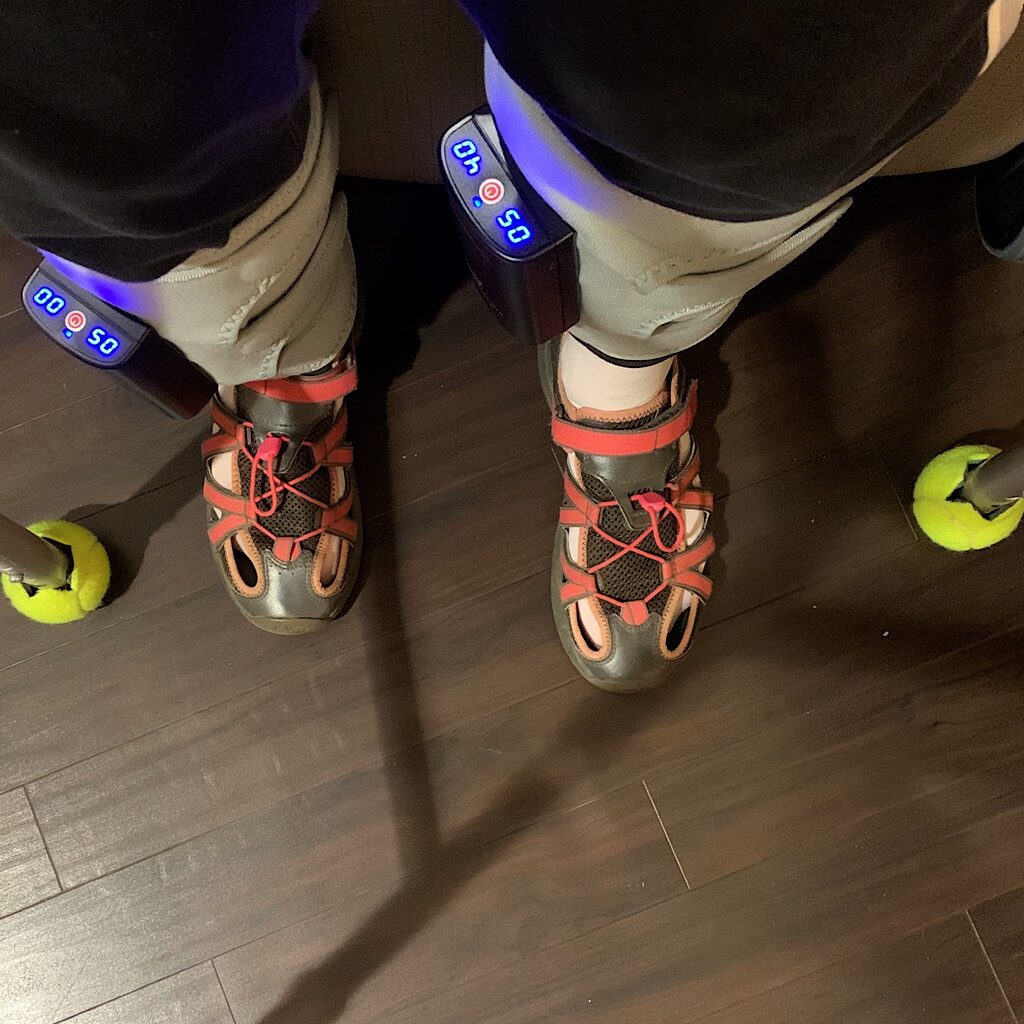
I chose Dr. Stroemer as my surgeon, because as it turned out, I liked his direct manner. I knew there’d be no sugar coating, but also no hard sell. That didn’t mean I wouldn’t pepper him with questions like, How many surgeries have you done? What happens if something goes wrong? Are you happy at home? (I was told happy surgeons have happy outcomes)
We compressed the time more than he would have liked with my first surgery just seven weeks before the second. He knew I was fit, but suggested I stay fit before surgery. While the pain caused me to rock from side-to-side as I walked, I still had good form on a bike. It was nearly impossible to open my legs wide enough to hop on, but I found I could lay the bike on the ground, step over and sort of slip it under me. I biked for miles and miles to get as physically strong as I could before D-day, and also to have some agency over my destiny.
By October 28th, I was ready to roll. Summit Orthopedics is a clinic with a surgery center. It’s cheaper than a hospital, which insurance companies like, and dedicated only to orthopedic surgeries, which can be safer for patients.
I had what is called Anterior Arthroplasty. Hip replacements in general are much more straightforward than knee or shoulder replacements (knock on wood, mine are in great shape) but it’s a huge plus when the incision can be made on the front of the body rather than the rear. This is because it’s less invasive and there’s no need to cut muscle or tendon in order to gain access to the bones. Less trauma means less pain and faster healing. Also, because the muscles are still in place, the risk of dislocation decreases.
That being said, the surgery requires a lot of skill and there were seven people working on me in the operating room. I received a spinal anesthetic and was out for all of it. What happens in there? Well, you can watch this video if you like and hear all the sawing, scraping, pounding and drilling that goes into replacing a hip with a metal and ceramic prosthetic that the bone will attach itself to.
The only “first hand” experience I got was when Stroemer agreed to snap a picture of my sawed off femur and text it to me in recovery. Yes, that picture made it to Instagram.
Most of us hikers are fit and slender, so I would recommend discussing with your anesthesiologist taking it easy on the pain meds. After the first surgery, I came out sick as a dog, learning that nausea is actually harder to manage than pain. A trick I learned to avoid a reaction to opioids is to instead alternate between Ibuprofen and Tylenol every 4-6 hours. It’s a strong cocktail.
After surgery, I was immediately taken from recovery to a set of stairs. With one hand on the railing and one on my trekking pole, I slowly waddled up each step, one at a time, then waddled back down. In fact, I wasn’t allowed to go home until I walked up and down stairs. The physical therapy is very easy including tightening the glutes, pressing down the quads, sliding the heels, pumping the ankles and lifting the legs. The key is to do them religiously. One tip is to begin the exercises before surgery. It seems to put the muscles on alert of what’s to come.
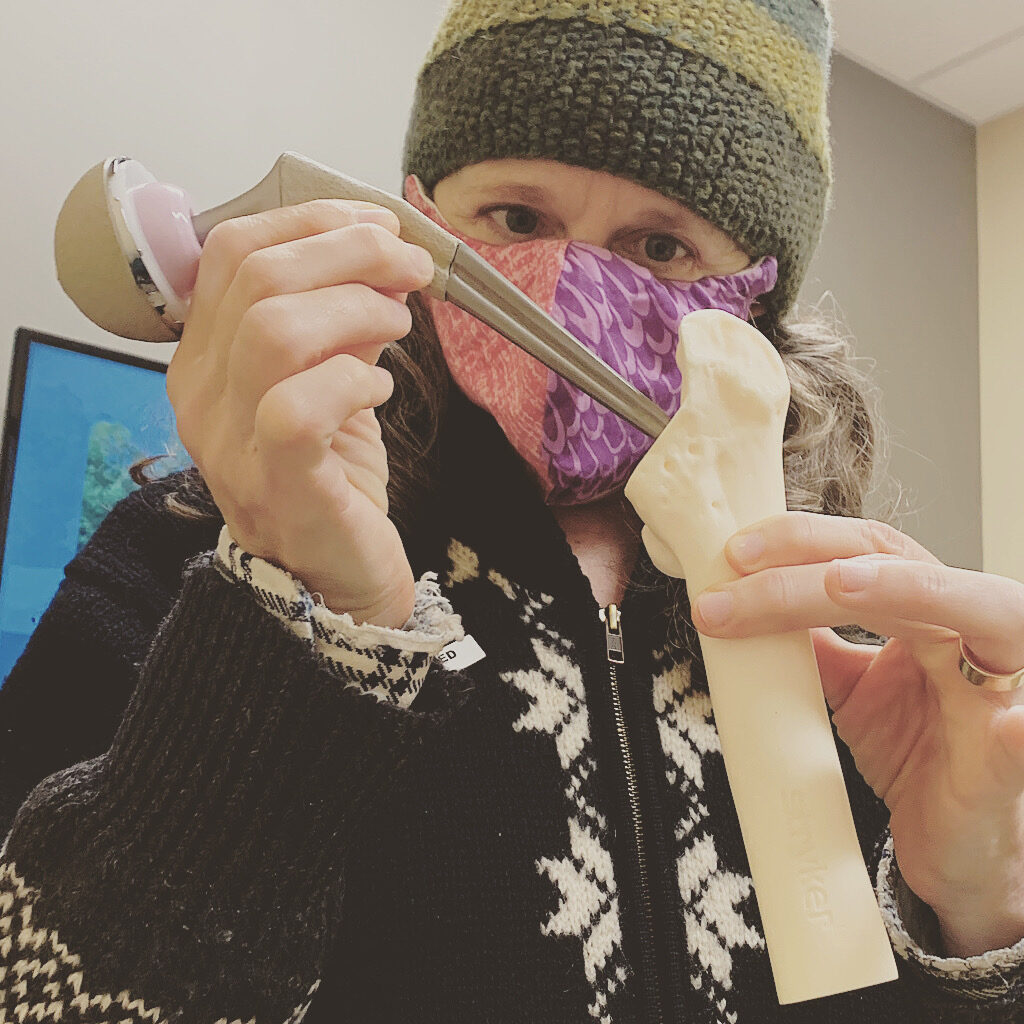
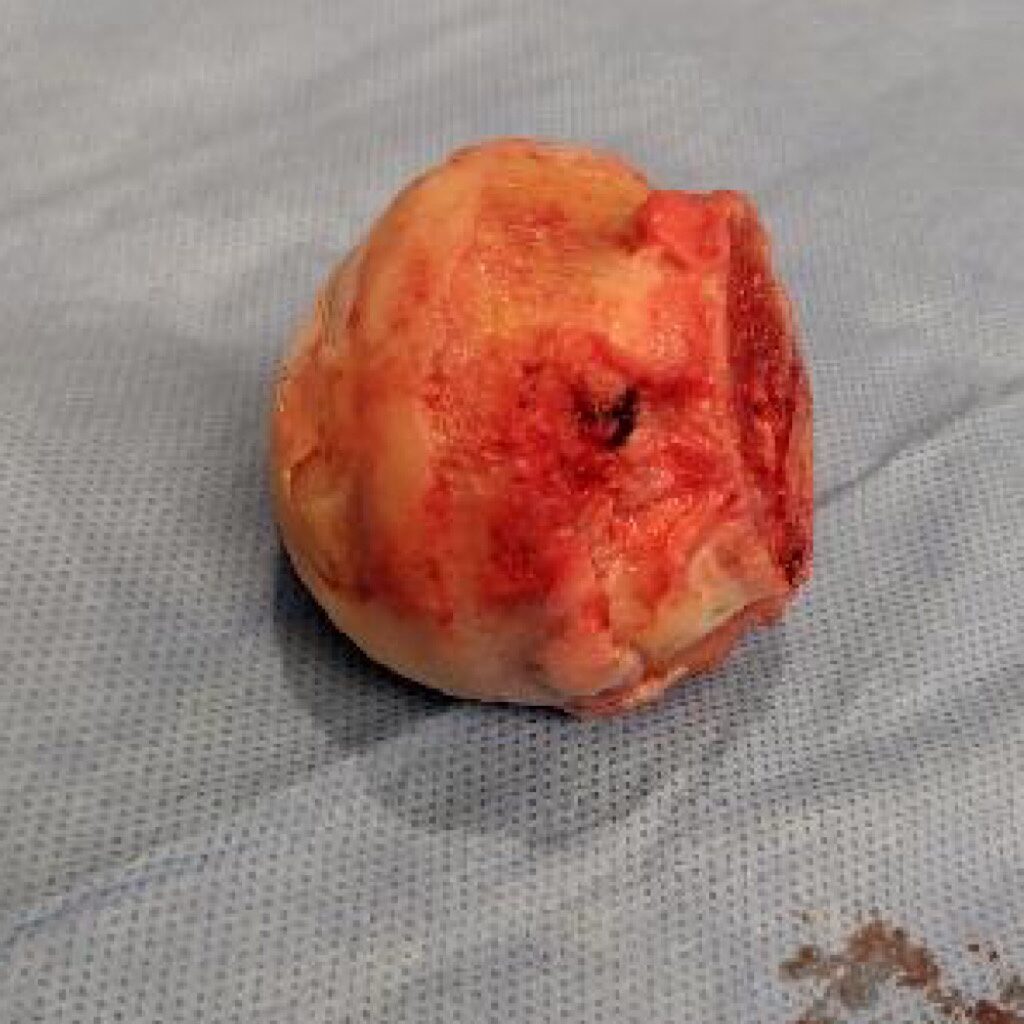
Frankly, the pain is not that bad – and this coming from a complete wimp. But very annoying is managing the risk of deep vein thrombosis. I had to wear leg pumps that whizzed and whirred like chanting Tibetan Monks and all on top of compression socks that were impossible to put on or remove on my own. My timing was just right since Richard was working from home due to Covid restrictions.
Because my right hip was deteriorating fast as the left was healing, it was much harder to improve in those seven intervening weeks. I rolled around the neighborhood with my walker and eventually worked my way up to walking carefully with trekking poles.
I was thrilled that I had scheduled the second surgery so close to the first. Sure, I was scared. In the first round, they bruised a nerve and my calf and foot felt like they’d gone to sleep. Nerves heal slowly and it might take years to get back to normal. However, I recently had Electromyography (EMG) that showed the nerve is not permanently damaged and is responding to stimulation. It’s a really cool test because you can listen to your muscles working!
The second time around, Stroemer cushioned me with pillows and was gentler popping me apart. Whatever he did, it worked. There was no neuropathy and suddenly I was standing on two strong hips. I never used a walker for the second recovery, relying only on my trekking poles. I joined the subculture of Mall Walkers setting a timer for 20 minutes, then 30, 45 and finally an hour. Before long, I began daily walks outside in the snow with Yaktrax for traction.
The crowning achievement was a visit to Colorado three months after surgery. We walked up and down and through deep snow in our snowshoes and I felt good. After a storm, the sun rose on a crystal blue sky and I was determined to get to the top of a Fourteener. I marched up slowly and methodically, proudly telling people as they passed that I was walking on brand new hips. “Wow!” they’d exclaim as they left me in the dust.
It was mostly the altitude that dampened my spirits, and an optical illusion that made the summit look further away than it was. Only when two people came down and looked bigger than they should, did I realize Quandary Peak was within my grasp.
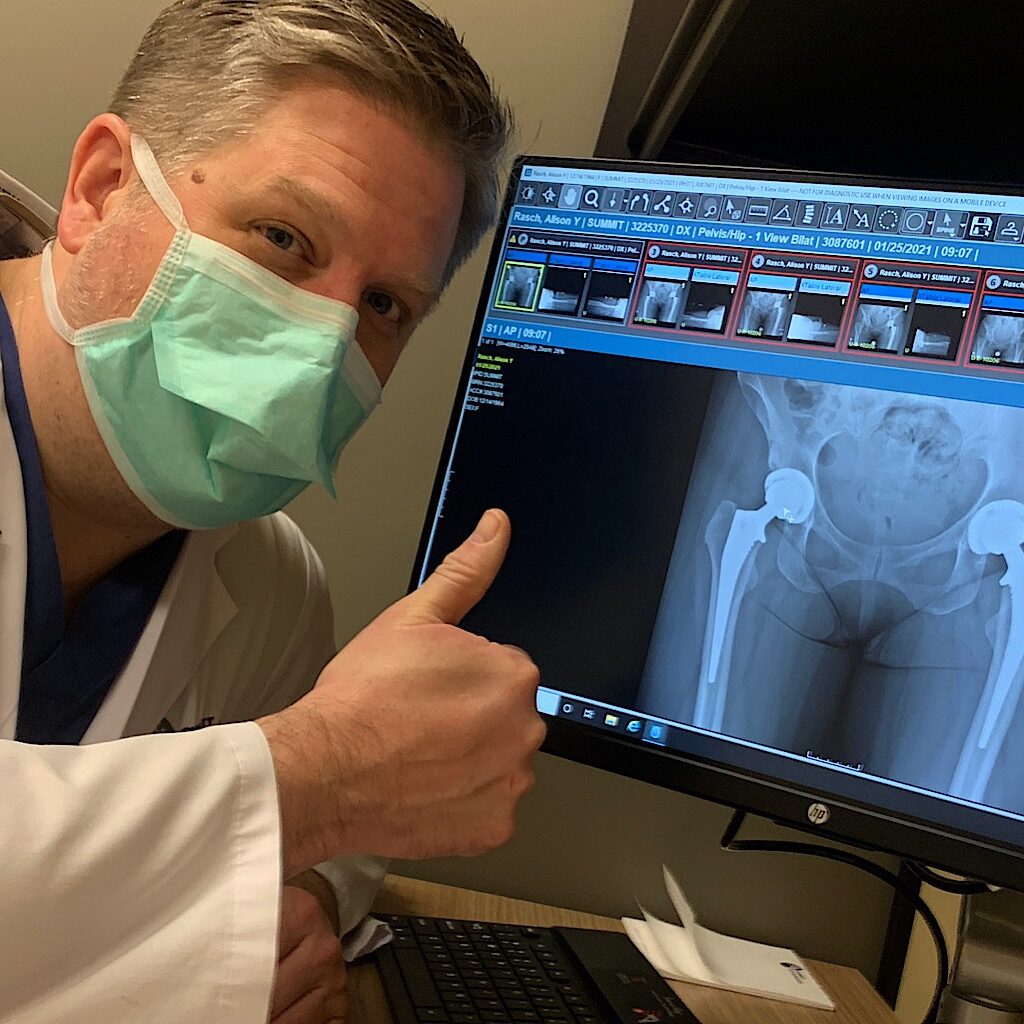
I am so lucky. Lucky to live in this age when we can have worn out joints replaced, lucky to have the time and support to recover fully, and lucky to anticipate more years to hike, backpack and explore. Jumping and running are probably off my list of activities. That’s only because they’ll wear down the prosthetic faster, one that’s anticipated to last thirty years.
I’ve already hiked a lot – Glacier National Park and the Bob Marshall Wilderness, the Teton Crest Trail, and the wild and trackless Cape Wrath Trail in Scotland’s Western Highlands. I feel better every day and stronger than I’ve ever been. I still practice hot yoga for flexibility, and sometimes climb walls and push around on skis.
But Stroemer tells me walking is the very best thing I can do to stay healthy and make these new hips last.
Works for me.
Tips for managing osteoarthritis (OA) in the hip
- Hip OA is not a death sentence to your thru-hiking life!
- OA presents as pain in the groin and front of the thigh.
- OA cannot be cured, only managed.
- Get an X-ray to determine a baseline. Orthopedists can accurately measure the severity of arthritis from an X-ray.
- Treat pain with NSAIDS like Ibuprofen, Advil, etc.
- Use physical therapy and targeted exercises. I chose Hot Yoga because the heat helped me stretch further and manage inflammation.
- Get a steroidal injection. One cortisone shot directly into my hip joint plus yoga helped my hip last three years and around 7,000 miles of walking. There are some risks and you must space out the shots by at least three months.
- Finally, consider total hip arthroplasty (replacement) The anterior approach is far less invasive and normally a faster recovery than the posterior approach. .
- Kia kaha! (Maori for “stay strong”) and happy trails


8 Responses
Hi Allison. I greatly appreciate rhe timing of your article. I “used” to be a hiker, cyclist and paddler. My hip caught up with me after a steep, rough descent to a waterfall in a remote canyon. Next day my hip muscles were locked up. Long story short, I get a new hip Feb 8. I will be hiking just in time for wildflower season! And even more remote waterfalls rarely seen!
Sidebar – many hikes you’ve done are on my list. Surprised you don’t have Patagonia on yours. I will get to Pata before TA but can’t wait to do both. Congrats on Cape Wrath! Watched many vids on it! The midges are ni joke!
good luck, Bill! You will be so much stronger with titanium reinforcement. The first two weeks are rough, but as long as you do the exercises religiously and keep walking, you’ll be back in no time.
I have not written too much about my trips to Argentina and Chile – I wasn’t really blogging then! I have done the circuit in Torres del Paine, which was out of this world. If you do it, be sure to take every little side trip. We had the place to ourselves and it’s trippy being right on the mountains. My other trip to Patagonia was to teach flute, an entirely different kind of journey. Here’s more on that: https://alisonyoungproductions.com/a-little-tango-in-her-blood-alison-young-productions/
Keep in touch and remember, “happy patients have happy outcomes!” Kia kaha, blissful
I am reading your blog and finding that now I understand much better what you have gone through and what you have accomplished through all of this! As you said, you (and all of us) are so fortunate to live during a time when worn out joints can be replaced. Here’s to many more experiences of healthy, blissful hiking!
many thanks, Sue! I do feel so lucky both that I have good doctors, but also that I’m built to be determined – ha! Can’t wait to throw myself back into a snow angel with you, though next time we catch up may be jumping into a lake!
Alison…fortitude is your middle name. You NEVER give up!
I am proud of you…..Keep trekking!
also genetic!
Amazing in so many ways. The technology, the skill of your doctor, your persistence, your quick recovery, hiking long distances on hips that are good as new. Go, Alison!
I feel INCREDIBLY lucky and really hope telling my story – especially the whiny bits – help other hikers/adventurers going through this ordeal. There is light at the end of the tunnel, I promise!